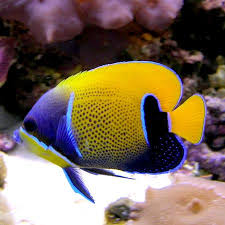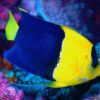Dragons in the Special Festivals of China’s Regional Cultures

Dragons hold a prominent place in Chinese culture, embodying power, authority, and the supernatural. The image of the dragon has evolved over thousands of years, deeply embedded in folklore, mythology, and even the spiritual and ceremonial practices of the Chinese people. In particular, dragons play an important role in the various traditional festivals celebrated across China’s diverse regions. These festivals, rooted in ancient beliefs and customs, bring together communities to honor the dragon’s symbolic connection to nature, prosperity, and divine intervention.
This article will explore the special role of dragons in regional festivals throughout China, focusing on the diverse ways these majestic creatures are celebrated. From the iconic Dragon Boat Festival to lesser-known regional dragon celebrations, we will examine how these festivals reflect the cultural identity, historical significance, and spiritual beliefs of various Chinese communities.
1. The Dragon Boat Festival: A National Celebration of Dragons
The Dragon Boat Festival (端午节, Duānwǔ Jié) is perhaps the most well-known festival in China where the dragon takes center stage. Celebrated on the 5th day of the 5th lunar month, this festival is recognized nationwide but also holds deep regional significance, particularly in the southern provinces.
1.1. Origins of the Dragon Boat Festival
The origins of the Dragon Boat Festival are intertwined with the commemoration of the patriotic poet and statesman Qu Yuan, who drowned in the Miluo River in 278 BCE. According to legend, the locals raced in boats to save him, and when they could not find his body, they threw rice dumplings into the river as a tribute to his memory and to prevent the fish from devouring his body. Over time, the event evolved into the Dragon Boat Festival, incorporating dragon boat races and other traditional activities.
1.2. The Role of Dragons in the Festival
At the heart of the Dragon Boat Festival lies the dragon, symbolizing strength, vitality, and the spirit of unity. The dragon boat races themselves are a dynamic display of synchronized paddling, often featuring boats that are elaborately decorated with dragon heads and tails. These boats mimic the dragon’s form and its symbolism of vitality and energy. The competition during the races mirrors the fierce and unyielding qualities of the dragon, and the tradition of racing boats evokes the ancient belief that the dragon, a water deity, has the power to control the rivers and seas.
In many regions of southern China, the dragon’s presence is not limited to the boats themselves but extends to the celebrations surrounding the festival. Colorful dragon dances are performed to ward off evil spirits, ensure good harvests, and bring prosperity. These vibrant dances are usually performed by skilled dancers dressed in dragon costumes, who manipulate long, flowing fabric to create the illusion of a dragon in motion. The dragon’s connection to water is also emphasized through rituals aimed at appeasing water spirits and ensuring the safety of those participating in the races.
2. The Longhua Temple Fair in Shanghai: A Regional Dragon Celebration
The Longhua Temple Fair (龙华庙会, Lónghuá Miàohuì) is a prominent annual event held in Shanghai that celebrates the power of the dragon, combining religious devotion with cultural festivities. The festival, held at the Longhua Temple, one of the oldest and most famous Buddhist temples in Shanghai, is a mixture of folk traditions, cultural performances, and vibrant dragon-themed activities.
2.1. Dragons in Longhua Temple Fair
The festival features a grand dragon procession, with a massive dragon figure paraded through the streets, symbolizing the protection of the community and the blessings of the divine. The dragon is often accompanied by performances of traditional Chinese opera, dragon dances, and other cultural displays that highlight Shanghai’s rich historical ties to traditional Chinese customs. The Longhua Temple Fair is a celebration of both Buddhist and Taoist beliefs, with the dragon acting as a symbol of protection, prosperity, and harmony between heaven and earth.
The festival also highlights Shanghai’s maritime history, as the region was once an important port city, and the dragon represents the power of the seas and rivers in local folklore. As part of the ceremony, participants pray to the dragon for safety and good fortune throughout the year, paying homage to the divine forces that govern both the natural and spiritual worlds.
3. The Nianhua Festival in Shaanxi: The Dragon and the Harvest
In the northwestern province of Shaanxi, the Nianhua Festival (年花节, Nián Huā Jié) is a celebration of the harvest season that takes place in late autumn. This festival is deeply rooted in the agricultural traditions of the region, and dragons are central figures in the festivities, symbolizing abundance and prosperity.
3.1. The Role of Dragons in Nianhua Festival
Dragons are featured prominently in the Nianhua Festival as part of the agricultural symbolism that celebrates a bountiful harvest. During the festival, dragon-shaped lanterns and dragon-themed floral displays are set up throughout the towns and villages. These dragons represent the power of nature and the blessings of the gods for a successful harvest season.
In addition to the dragon lantern displays, the festival includes various performances of dragon dances, where local performers mimic the movements of the dragon through traditional dances that signify the cycle of growth, harvest, and renewal. The dance is a way of invoking the dragon’s power to ensure that the harvest is plentiful and that the local communities are protected from misfortune.
4. The Dongzhi Festival in Guizhou: The Dragon and the Winter Solstice
The Dongzhi Festival (冬至节, Dōngzhì Jié) is celebrated during the winter solstice, which typically occurs on December 21st or 22nd. While this festival is celebrated across all of China, the Dongzhi Festival in Guizhou stands out due to its unique regional practices, where the dragon is central to the rituals honoring the return of light and warmth.
4.1. Dragons in Guizhou’s Dongzhi Festival
In Guizhou, the dragon’s role is closely tied to the shifting of the seasons and the return of the sun. As the longest night of the year gives way to the gradual increase in daylight, the dragon is seen as a powerful symbol of renewal, strength, and the cyclical nature of time. During the Dongzhi Festival, dragon dances and dragon-shaped decorations are used to celebrate the beginning of the new solar cycle. The performances not only honor the natural world’s rhythms but also symbolize the triumph of light over darkness.
In Guizhou, there is a belief that the dragon controls the weather, and during the Dongzhi Festival, people pray to the dragon for favorable conditions in the coming year. The dragon is seen as a messenger between humans and the celestial realm, helping to ensure a prosperous year with good harvests, rain, and sunshine.
5. The Zhejiang Lantern Festival: The Dragon and the Spirit of the New Year
The Zhejiang Lantern Festival (浙江元宵节, Zhèjiāng Yuánxiāo Jié), held during the 15th day of the first lunar month, marks the end of the Chinese New Year celebrations. Known for its spectacular lantern displays and dragon-themed festivities, the Lantern Festival in Zhejiang province is a dazzling celebration of light, color, and mythological creatures, particularly the dragon.
5.1. The Dragon in Lantern Displays
Throughout the Zhejiang Lantern Festival, large-scale dragon lanterns are constructed and paraded through the streets. These lanterns are often intricately designed, with dragons of various colors and shapes symbolizing different aspects of life, from wealth to happiness to longevity. The lanterns are lit at night, creating a magical atmosphere that brings the dragon to life and underscores its importance as a bringer of good fortune and vitality.
In addition to the dragon lanterns, the festival includes dragon dances, where groups of performers hold a dragon costume made from colorful fabric and move in synchronization to mimic the dragon’s movements. These performances are believed to bring good luck, chase away evil spirits, and ensure that the new year will be filled with prosperity.
6. Conclusion: The Enduring Power of the Dragon in Chinese Festivals
Throughout China, the dragon continues to hold a central place in the country’s regional festivals. From the grand spectacle of the Dragon Boat Festival to the intimate ceremonies in places like Guizhou and Shaanxi, the dragon symbolizes much more than just a mythical creature—it is a representation of the forces of nature, the cycles of life, and the unity of communities. Whether as a protector of the harvest, a bringer of rain, or a symbol of prosperity, the dragon remains a vital part of China’s cultural identity, bridging the gap between the natural world and the spiritual realm.
As long as these festivals continue to be celebrated, the dragon will remain a powerful symbol in Chinese culture, reminding people of the deep connections they share with nature and the timeless traditions that have shaped their world. Through these regional festivals, the dragon lives on, a testament to its enduring power and significance in Chinese history and culture.

